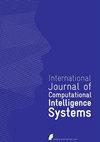Semantic Segmentation of High-Resolution Remote Sensing Images with Improved U-Net Based on Transfer Learning
IF 2.9
4区 计算机科学
International Journal of Computational Intelligence Systems
Pub Date : 2023-11-14
DOI:10.1007/s44196-023-00364-w
引用次数: 0
Abstract
Abstract Semantic segmentation of high-resolution remote sensing images has emerged as one of the foci of research in the remote sensing field, which can accurately identify objects on the ground and determine their localization. In contrast, the traditional deep learning-based semantic segmentation, on the other hand, requires a large amount of annotated data, which is unsuitable for high-resolution remote sensing tasks with limited resources. It is therefore important to build a semantic segmentation method for high-resolution remote sensing images. In this paper, it is proposed an improved U-Net model based on transfer learning to solve the semantic segmentation problem of high-resolution remote sensing images. The model is based on the symmetric encoder–decoder structure of U-Net. For the encoder, transfer learning is applied and VGG16 is used as the backbone of the feature extraction network, and in the decoder, after upsampling using bilinear interpolation, it is performed multiscale fusion with the feature maps of the corresponding layers of the encoder in turn and is finally obtained the predicted value of each pixel to achieve precise localization. To verify the efficacy of the proposed network, experiments are performed on the ISPRS Vaihingen dataset. The experiments show that the applied method has achieved high-quality semantic segmentation results on the high-resolution remote sensing dataset, and the MIoU is 1.70%, 2.20%, and 2.33% higher on the training, validation, and test sets, respectively, and the IoU is 4.26%, 6.89%, and 5.44% higher for the automotive category compared to the traditional U-Net.基于迁移学习的改进U-Net高分辨率遥感图像语义分割
高分辨率遥感图像的语义分割能够准确识别地面目标并确定其定位,已成为遥感领域的研究热点之一。另一方面,传统的基于深度学习的语义分割需要大量的标注数据,不适合资源有限的高分辨率遥感任务。因此,建立高分辨率遥感图像的语义分割方法具有重要意义。针对高分辨率遥感图像的语义分割问题,提出了一种基于迁移学习的改进U-Net模型。该模型基于U-Net的对称编码器-解码器结构。编码器采用迁移学习,以VGG16作为特征提取网络的主干,解码器采用双线性插值上采样后,依次与编码器对应层的特征图进行多尺度融合,最终得到每个像素的预测值,实现精确定位。为了验证该网络的有效性,在ISPRS Vaihingen数据集上进行了实验。实验表明,该方法在高分辨率遥感数据集上取得了高质量的语义分割结果,在训练集、验证集和测试集上的MIoU分别提高了1.70%、2.20%和2.33%,在汽车类别上的IoU分别提高了4.26%、6.89%和5.44%。
本文章由计算机程序翻译,如有差异,请以英文原文为准。
求助全文
约1分钟内获得全文
求助全文
来源期刊

International Journal of Computational Intelligence Systems
工程技术-计算机:跨学科应用
自引率
3.40%
发文量
94
期刊介绍:
The International Journal of Computational Intelligence Systems publishes original research on all aspects of applied computational intelligence, especially targeting papers demonstrating the use of techniques and methods originating from computational intelligence theory. The core theories of computational intelligence are fuzzy logic, neural networks, evolutionary computation and probabilistic reasoning. The journal publishes only articles related to the use of computational intelligence and broadly covers the following topics:
-Autonomous reasoning-
Bio-informatics-
Cloud computing-
Condition monitoring-
Data science-
Data mining-
Data visualization-
Decision support systems-
Fault diagnosis-
Intelligent information retrieval-
Human-machine interaction and interfaces-
Image processing-
Internet and networks-
Noise analysis-
Pattern recognition-
Prediction systems-
Power (nuclear) safety systems-
Process and system control-
Real-time systems-
Risk analysis and safety-related issues-
Robotics-
Signal and image processing-
IoT and smart environments-
Systems integration-
System control-
System modelling and optimization-
Telecommunications-
Time series prediction-
Warning systems-
Virtual reality-
Web intelligence-
Deep learning
 求助内容:
求助内容: 应助结果提醒方式:
应助结果提醒方式:


